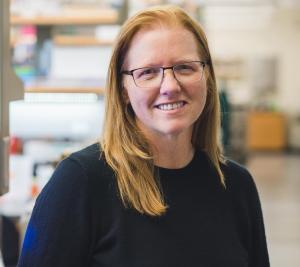 |
Kristi S. Anseth
Distinguished Professor and Tisone Professor
Dept. of Chemical and Biological Engineering
University of Colorado
Boulder, CO
Dr. Kristi S. Anseth is a world-class researcher in biomaterials and regenerative medicine, a Distinguished Professor in the Department of Chemical and Biological Engineering, a Tisone Professor, and Associate Director of the BioFrontiers Institute. She is one of a handful of individuals elected to the National Academy of Sciences, the National Academy of Medicine, the National Academy of Engineering, and the National Academy of Inventors. Popular Science named her one of its “Brilliant 10” scientists of 2008, and she was inducted into the Colorado Women’s Hall of Fame in 2012. Dr. Anseth is an accomplished researcher, but she is also a thoughtful teacher. She has created three new courses at CU based on her research, allowing students to engage with the latest developments in tissue engineering and regenerative medicine.
Lecture 1: Dynamic Hydrogel Matrices: Cell Biology in the Fourth Dimension
Wednesday, March 13, 2019
Reception at 3:30 p.m., Cheney Room/1413 Engineering Hall
Lecture at 4:00 p.m.,
1610 Engineering Hall
Lecture 2: Chemical Engineering at the Interface of Disciplines
Thursday, March 14, 2019
Reception at 3:30 p.m., Cheney Room/1413 Engineering Hall
Lecture at 4:00 p.m.,
1610 Engineering Hall
Lecture 1 abstract
Dynamic Hydrogel Matrices: Cell Biology in the Fourth Dimension
Methods for culturing mammalian cells in a biologically relevant context are increasingly needed to study cell and tissue physiology, expand and differentiate progenitor cells, and to grow replacement tissues for regenerative medicine. Two-dimensional culture has been the paradigm for in vitro cell culture; however, evidence and intuition suggest that cells behave differently when they are isolated from the complex architecture of their native tissues and constrained to petri dishes or material surfaces with unnaturally high stiffness, polarity, and surface to volume ratio. As a result, biologists are often faced with the need for a more physiologically relevant 3D culture environment, and many researchers are realizing the advantages of hydrogels as a means of creating custom 3D microenvironments with highly controlled chemical, biological and physical cues. Further, the native ECM is far from static, so ECM mimics must also be dynamic to direct complex cellular behavior, the so called fourth-dimension. In general, there is an un-met need for materials that allow user-defined control over the spatio-temporal presentation of important signals, such as integrin-binding ligands, growth factor release, and biomechanical signals. Developing such hydrogel mimics of the ECM for 4D cell culture is an archetypal engineering problem, requiring control of numerous properties on multiple time and length scales important for cellular functions. New materials systems have the potential to significantly improve our understanding of how cells receive information from their microenvironment and the role that these dynamic processes may play in controlling the stem cell niche to cancer metastasis. This talk will illustrate our recent efforts to advance hydrogel chemistries for 4D cell culture and regenerative biology, and how we dynamically control biochemical and biophysical properties through orthogonal, photochemical click reaction mechanisms.
Lecture 2 abstract
Lecture 2: Chemical Engineering at the Interface of Disciplines
When I began my career as an Assistant Professor, I wondered how to distinguish myself in my career. The boundaries between science and engineering, biology and material science, basic and translational research are often blurry, and how does one transition from the ordinary to something that is more extraordinary. One path is to look at the interfaces of fields and training, and this happens to be a path that I pursued. This talk will touch on topics such as when to take risks, how to build a network of support, and how to insure the future success of the chemical engineering field by engaging in research that is valued across disciplines.
